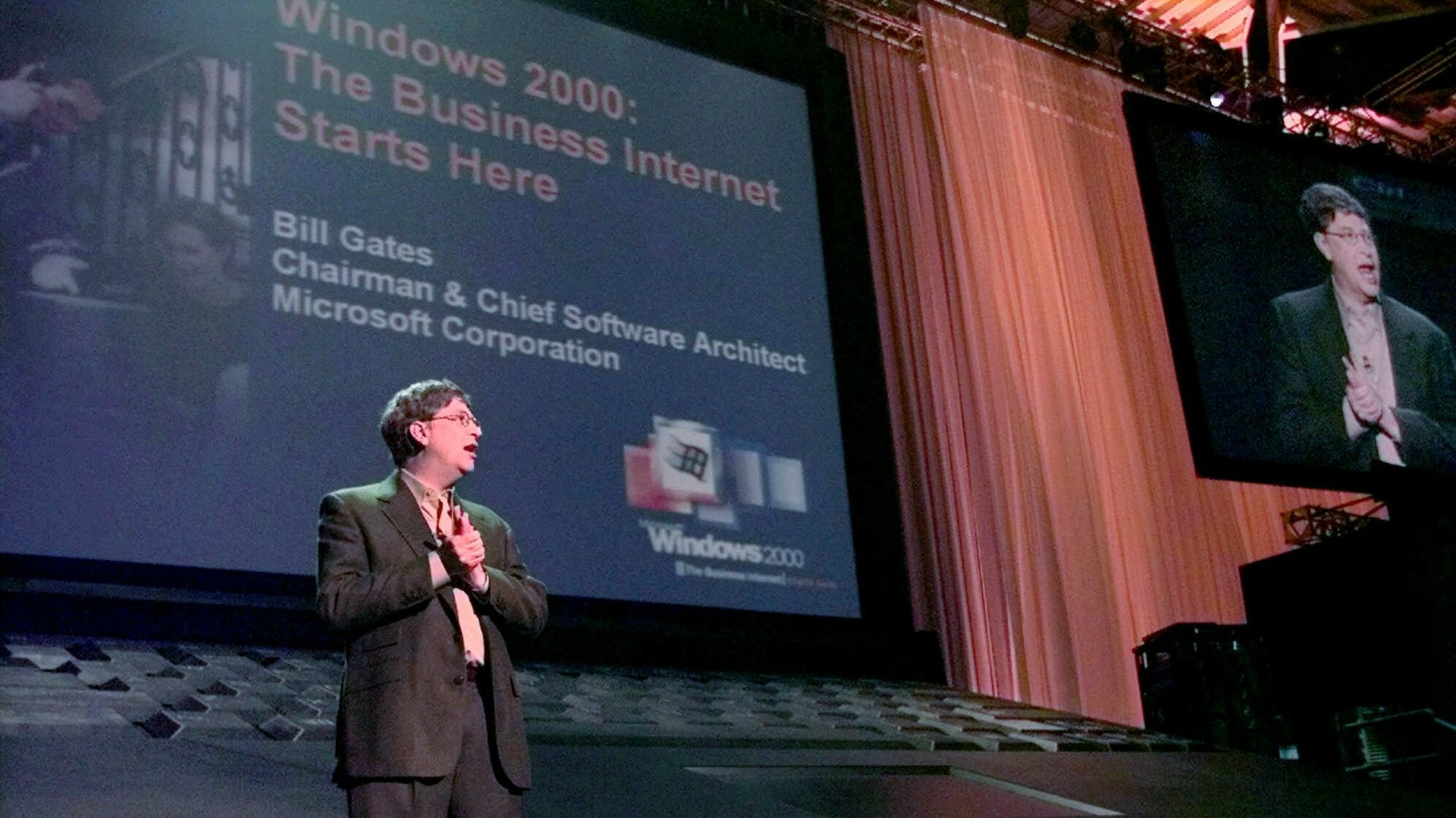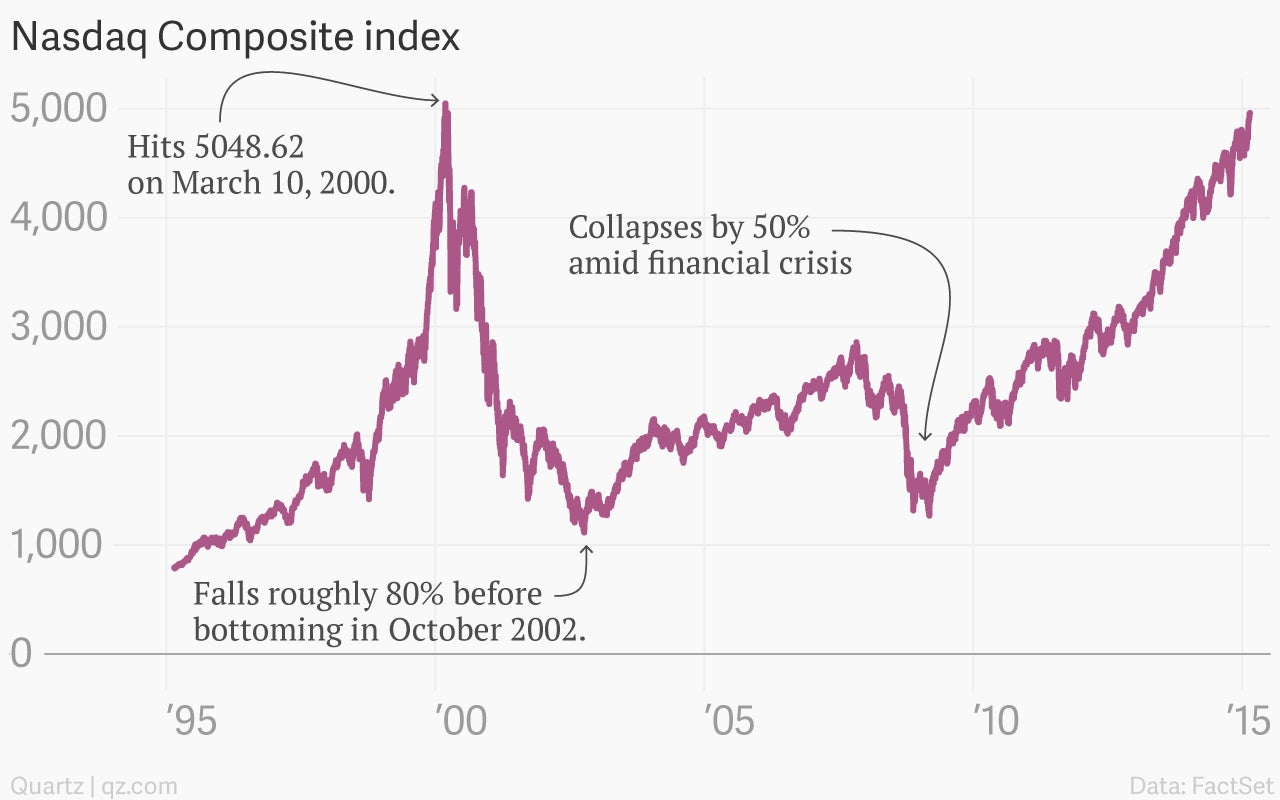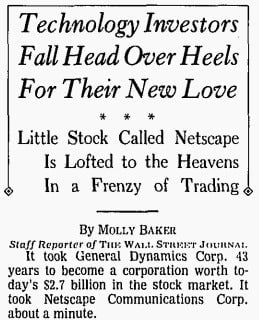
And we’re back.
The Nasdaq Composite index notched a remarkable 15-year roundtrip today, as it climbed above 5,000 for the first time since the great dot-com bust of 2000-01.
That bust, of course, was preceded by a boom during the late 1990s in which the Nasdaq Composite index became a real-time barometer on what was then described as the “new economy,” a constellation of companies loosely centered around then-nascent internet technology.

Between 1995 and 2000, the Nasdaq Composite soared by more than 440%, as Americans embraced the market in a mania unseen since the 1920s. Upstarts such as Microsoft, Dell Computer, and Lucent ballooned into corporate giants in what seemed like moments. Access to hot IPOs—often of companies with dubious business models—minted fresh millionaires within minutes. The Wall Street Journal called the stock market run that started in the 1990s ”the greatest bull market in history.”
Even the crudest of analysis would have concluded it couldn’t last. The reason was simple. Many internet companies weren’t making any money. At the peak in March 2000, the trailing price-to-earnings ratio on the Nasdaq topped 100. (Traditionally a fully valued market trades at an earnings multiple of close to 15.)

After touching its all-time high of 5,048.62 on March 10, 2000, the Nasdaq began a series of giant wobbles. By April that year, it had fallen by more than 20%, into a bear market. It didn’t stop there. All told, the Nasdaq Composite tumbled nearly 80% before finally scraping to a halt in October 2002. It took years for the Nasdaq to clamber back to 2,500. It then promptly collapsed again during the stock-market meltdown that accompanied the 2008 financial crisis.
But since March 9, 2009, when the Nasdaq finally got off the mat, the index has performed splendidly. It’s up more than 300%, outpacing the S&P 500 index and the Dow Jones Industrial Average over the same period.
So should investors be leery of another looming Nasdaq collapse? Well, in a certain way, investors in equities should always be prepared for a rocky ride. But it’s important to note that, like a fine wine, the Nasdaq Composite has mellowed with age. There are fewer Nasdaq companies—there were nearly 5,000 companies in the Nasdaq Composite back in 1999; now there are roughly 2,500. Those companies have longer track records, too. The median age of a Nasdaq company in 1999 was about 15 years; by the end of 2013, it was roughly 25 years old, according to a Nasdaq white paper published last year. The Nasdaq Composite’s price-to-earnings ratio is 20. Not cheap, but nowhere near heights of the dot-com era.
True, it retains its tech-heavy character. Apple—the world’s largest company by market value—is by far the most heavily weighted stock in the index. But Apple—and Microsoft and Google, the second and third largest stocks in the index—are no Pets.com. (Apple is producing the largest profits ever generated by a corporation.) In fact, many of the companies in the Nasdaq Composite, including Apple, now have such stable streams of earnings that they’re able to pay dividends to shareholders.
Apple’s size also makes it the largest stock in the S&P 500 index, underscoring how the technology sector has turned into something of a cornerstone of US growth. And as the overlap between the Nasdaq and other indexes has grown, the correlation of these indexes has become tighter. And that’s because even after the dot-com bust, the so-called “new economy” of the 1990s remains alive and well. Now we simply call it “the economy.”